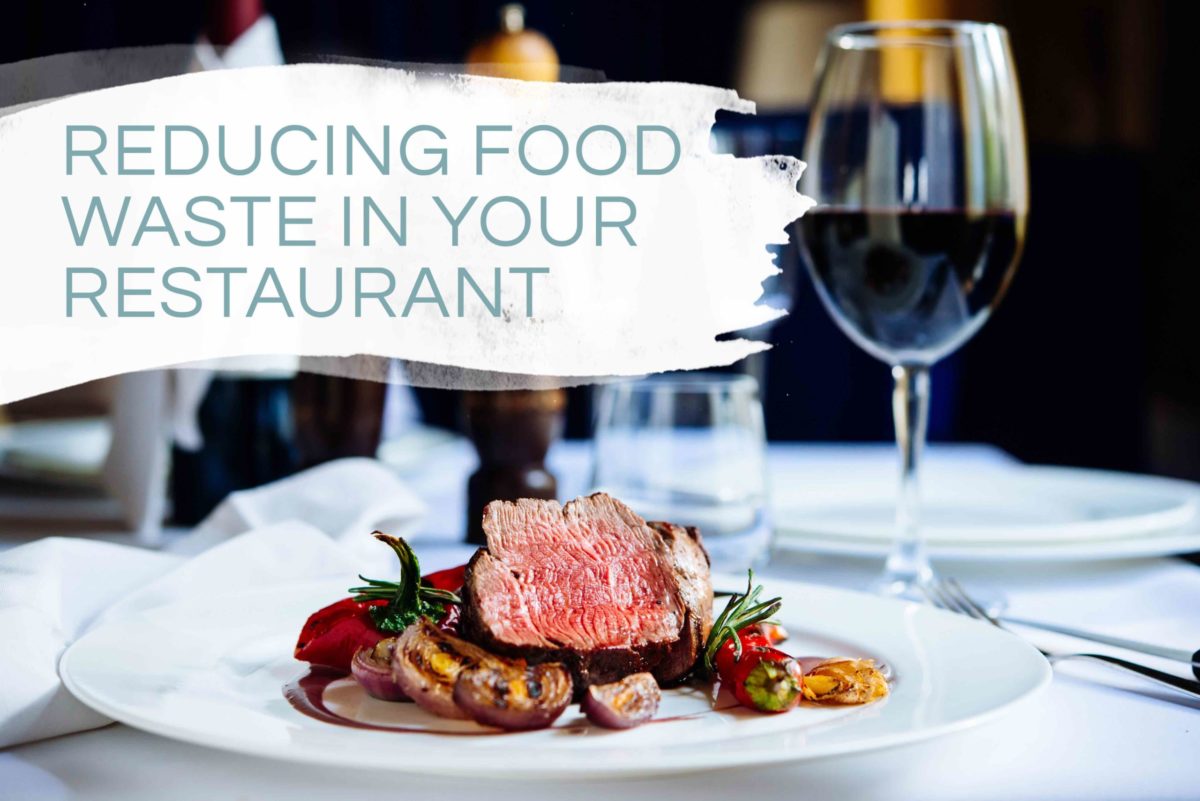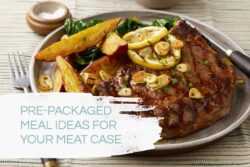
How Small Menus and Premium Beef Cuts Help Restaurants Cut Down on Food Waste
May 27, 2025
With the simplicity and profitability that menu redesign can bring, the restaurant industry’s trend toward reduced menus has been on the rise for some time now. Smaller menus can create efficiencies in preparation, lower labor costs, reduce food waste, and eliminate “choice paralysis,” for starters. They can also help restaurants narrow their brand identity and align menu items with their guests’ unique preferences.
“When we include over seven items, a guest will be overwhelmed and confused, and when they get confused, they’ll typically default to an item they’ve had before.”
–Gregg Rapp, Menu Engineer
Read on to explore small menu ideas to help streamline your kitchen and boost your bottom line—and discover how premium beef can play a major part in your restaurant’s success.
Small Menus Are Here to Stay, Even for Major Chains
The COVID-19 pandemic accelerated the shift from expansive to reduced menus. Labor shortages and supply chain disruptions forced even major chains to simplify:
- IHOP condensed its menu from 12 pages to just 2, according to CNN
- Dave & Busters reduced its 40-item menu to 15 offerings
- McDonald’s eliminated all-day breakfast, along with salads and parfaits
Many chains stayed true to these condensed menus due to the benefits they experienced, which included simplified operations, cost savings, and faster service.
How Much Food Do Restaurants Waste?
The 2025 ReFED U.S. Food Waste Report shares that there were 73.9M total tons of surplus food generated in 2023, which is 31% of the U.S. food supply.
Another staggering figure—$382 billion—that’s the value of surplus food generated in 2023.
Though consumer homes (35.2%), farms (23.8%), and manufacturing (17.8%) are the biggest contributors to national food waste, foodservice sources come in third, contributing to 17.2% of the total U.S. food surplus.
So, apart from being a drain on natural and labor resources, food waste and loss are major detriments to foodservice bottom lines.

Smaller menus with beef cuts that deliver versatility and profitability offer restaurant owners and chefs a unique opportunity to address these issues while benefiting their overall operations.
How Premium Beef Cuts Support Small Menus
Smaller menus are here to stay—and for good reason. They help restaurants reduce waste, maintain consistency, and focus on delivering exceptional experiences. Premium beef is a perfect fit for this approach. Whether it’s a filet mignon or a slow-braised chuck roast, beef remains a showstopping centerpiece. Its versatility across a wide range of dishes makes it easy to anchor a streamlined menu without sacrificing creativity or that all-important wow factor.
Versatile Natural Angus Beef Menu Ideas for Restaurants
1. Around the World Eats Featuring a Top Menu Cut: Top Sirloin
Top sirloin is a full-flavored, lean cut that performs well as a standalone steak—especially when paired with nutritious sides like eggplant fries. But its versatility doesn’t stop there. The same cut can be sliced thin for Carne Asada Tacos or browned for Korean Beef and Broccoli, allowing you to explore globally inspired flavors without bringing in a whole new protein. By using top sirloin across multiple dishes, you can expand your menu’s cultural reach while keeping inventory tight and prep streamlined. Lean sirloin appeals to health-conscious guests looking for low-carb or high-protein options, too.

2. Steak & Salad Featuring a Top Menu Cut: Tenderloin
If steak is a permanent offering on your menu, beef tenderloin is probably one of the best options. While there’s no beating a filet mignon simply seasoned with salt and pepper, if you have beef tenderloin to spare, there are endless possibilities for premium salads. Whether you use it to top the quintessential American Cobb salad or toss it onto a bed of arugula, Angus beef tenderloin helps elevate any salad—and helps you repurpose perishable ingredients before they go to waste. Beef tenderloin also makes for delicious sliders if you have extra bread or buns that need to be used, helping you keep a diverse menu while reducing waste. Win-win.

3. Comforting Classics Featuring a Top Menu Cut: Chuck Roast
A hearty stew that tastes homemade is great for comfort food in cold months, but chuck roast—especially when well-marbled and raised naturally—can offer restaurateurs exceptional value that extends beyond one time of year. Chuck roast is one of the most versatile cuts of beef, adding delicious, beefy flavor to everything from enchiladas to beef stroganoff. If you need to move tortillas, potatoes, pasta, root vegetables, or even fruits out of your kitchen and onto guests’ plates, use chuck roast to get creative or view our exclusive recipes for chuck roast.

Portion Control: Smaller Sizes Can Further Cut Waste
We recommend offering flexible portion sizes (or at least a range). Research shows that large portion sizes account for a significant amount of food waste, as restaurant guests often fail to take home or consume leftovers. And, cutting down on portion sizes will save you time on prep and reduce waste. You’ll also give guests the option to enjoy multiple dishes or save room for dessert.
“On average, diners leave 17 percent of meals uneaten, but 55 percent of these leftovers stay on the table.”
–Natural Resources Defense Council
Reduced Menus Can Still Give Guests Meals and Experiences They’ll Crave
Natural Angus beef elevates the dining experience, no matter the menu size or dish. Tender, well-marbled, and raised naturally, our Angus beef gives your customers beef they’ll crave by name and adds to the premium experience of fine dining.
Learn more about Aspen Ridge Natural Angus beef for foodservice, or get in touch with us today for tailored menu recommendations and premium cuts for your restaurant.
This article was originally published in August 2021 but was updated in May 2025.



